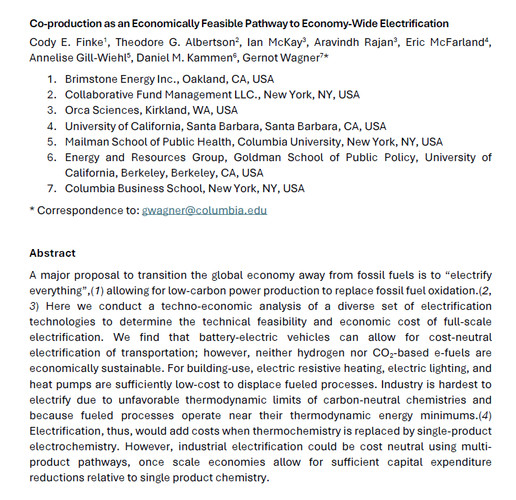Don’t Slam the Door on Inexpensive Chinese Electric Vehicles
by Gernot Wagner & Conor Walsh
President Biden came out swinging this week when he announced a series of steep tariffs on Chinese imports, including 25 percent on certain steel and aluminum products, 50 percent on semiconductors and solar panels and 100 percent on electric vehicles.
The administration’s official reason for the policy is simple: Chinese imports are undercutting American manufacturers in swing states like Michigan, Wisconsin and Pennsylvania. And Mr. Biden wants to protect them from competition, as he pours huge amounts of government money into building up the manufacturing of electric vehicles and solar panels that can eventually compete with China’s inexpensive offerings. But the truth is, these new tariffs on electric vehicles are little more than a handout to legacy car companies like General Motors and Ford. Middle-class Americans should have access to these cars, and because of these tariffs, they will remain a luxury, available mainly to the rich.
With more cash and better credit, wealthy Americans are the only ones who can afford the electric vehicles currently on the market, which cost over $55,000 on average. A recent survey found that 83 percent of E.V. drivers in the United States had a household income above $75,000, which is the median in the country; 57 percent had incomes above $100,000.
Low-cost Chinese models that lower- and middle-income Americans could afford — like BYD’s Seagull, which runs for less than $10,000 — aren’t currently sold here largely because of tariffs over 25 percent. The new tariffs of 100 percent will make it even harder for these cars to compete in the U.S. market.
The hope is that one day, U.S. automakers can offer Americans the low-cost electric cars they have long promised. But that’s still a long way off, in part because the companies (with the exception of Tesla) have been slow to scale up their E.V. production to the point where the costs could come down. (And Tesla, too, has scrapped plans to sell a car under $35,000.) Every electric vehicle sold still cuts into the profits they make from selling gasoline-powered vehicles, and General Motors and Ford together sold fewer than 150,000 E.V.s in 2023, a tiny fraction of the 15 million new cars sold in the United States last year.
It is clear that American car manufacturers need to catch up to the competition, and fast. The problem with using tariffs to protect them from competition is that the companies then have less incentive to invest in new technologies. Chinese companies will continue making huge strides, selling their cars abroad while cutting off opportunities for American companies to export their own products to foreign markets. What’s more, Chinese cars could still enter the United States through the back door, if companies like BYD set up manufacturing plants in Mexico or Southeast Asia.
We’ve been here before. In the 1980s, the Reagan and Bush administrations worried about the fact that Japan was dumping cheap cars onto our market. The response then was voluntary export quotas, which allowed Japanese entry into the market in a way the new tariffs will not. Japanese competition ultimately forced U.S. car manufacturers to innovate. This time around, Chinese competition could have had a similar effect.
This isn’t to say that the United States shouldn’t consider tariffs at all. There is a different kind of tariff focused on the greenhouse gas emissions created in making imported goods that would protect America’s nascent green economy and give consumers access to the cheaper clean cars and solar panels from China they want. The European Union will apply such carbon tariffs beginning in 2026, with prices now around $75 per ton of carbon dioxide, which will set an equal playing field for domestic manufacturers and importers alike. We could do the same in the United States.
Carbon tariffs create all the right incentives: They encourage foreign manufacturers to decarbonize their products, leading to a virtuous cycle of lower prices and emissions. They also enjoy bipartisan support in the United States, from senators such as Sheldon Whitehouse, Democrat of Rhode Island, and Bill Cassidy, Republican of Louisiana. Both have introduced bills that would collect tariffs based on the carbon intensity of imports.
The Biden administration is right that climate policies must work for the people of Detroit and Pittsburgh as much as they work for well-off Tesla drivers. But to accomplish these goals, it ought to be taxing China for its soaring carbon emissions, not for its electric vehicles and solar panels, which for now, at least, the United States needs badly. Given China’s soaring carbon emissions, carbon tariffs will be tough on the country, but for the right reasons.
Gernot Wagner is a climate economist at Columbia Business School. Conor Walsh is a macroeconomist at the school.
Published in The New York Times on May 15th, 2024.
Related:
Wagner, Gernot and Shang-Jin Wei. “The Right Response to China’s Electric-Vehicle Subsidies.” Project Syndicate, 5 April 2024.

